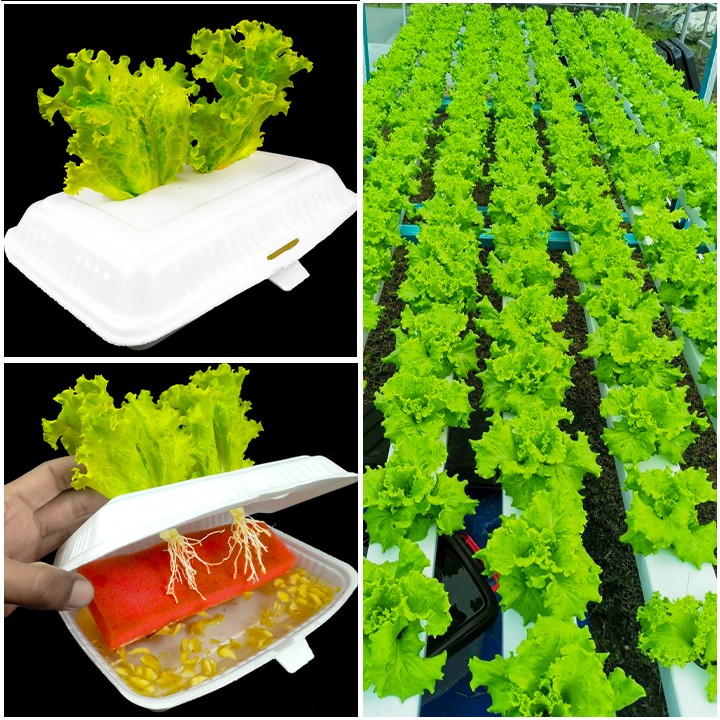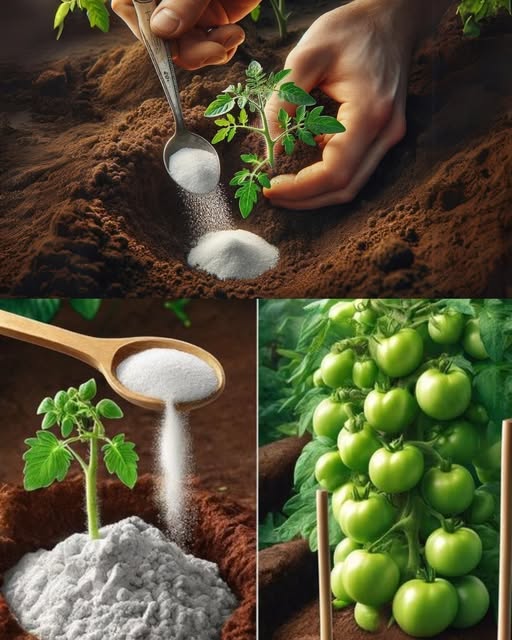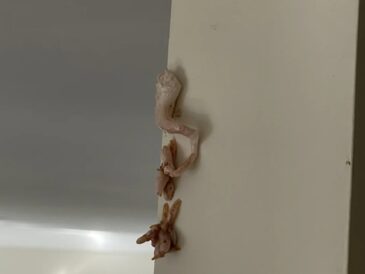Growing your own lettuce at home is not only a satisfying hobby but also a rewarding one. You don’t need a large garden or a lot of gardening experience to enjoy fresh, homegrown lettuce. In fact, one of the easiest and most efficient ways to grow lettuce is by propagating it from leftover lettuce leaves. This method allows you to regrow lettuce at home quickly and with minimal effort, using just a few simple tools and a little patience.
Lettuce is one of the most popular salad greens due to its mild flavor, crisp texture, and versatility. It thrives in cooler temperatures, making it perfect for growing indoors or in cooler months. Whether you have a small balcony, kitchen windowsill, or backyard, you can easily grow lettuce plants from their leaves using water propagation. In this article, we will walk you through a step-by-step guide to help you grow lettuce plants from leaves, using water propagation as an easy and sustainable method.
Why Grow Lettuce from Leaves?
Before diving into the process, you might wonder why you should consider growing lettuce from leaves instead of starting from seeds. There are several reasons why this method is beneficial:
- Low Maintenance: Growing lettuce from leaves is incredibly simple and requires very little care or gardening experience. It is a great method for beginners or those with little time for gardening.
- Quick Results: Unlike seeds, which can take weeks to sprout and grow, lettuce grown from leaves can show new growth within days.
- Sustainability: Propagating lettuce from leftover scraps reduces food waste. Instead of discarding your lettuce leaves, you can reuse them to grow more.
- Cost-Effective: If you buy lettuce frequently, regrowing it from the leaves can save you money, as you don’t need to buy new plants or seeds every time.
- Fresh and Convenient: Having fresh lettuce growing right at home means you can enjoy freshly harvested greens whenever you need them, whether for a salad, sandwich, or garnish.
Materials You Will Need
Before you start propagating lettuce from leaves, gather the following materials:
- A head of lettuce (either Romaine, Iceberg, or Butterhead lettuce works well)
- A sharp knife or scissors to cut the lettuce
- A shallow bowl or container (preferably glass)
- Water (preferably filtered or room temperature)
- A sunny spot for the growing lettuce (a windowsill or sunny countertop works well)
- A small planter or garden bed (optional, for transplanting the lettuce once it has grown roots)
Step-by-Step Guide to Grow Lettuce from Leaves
Step 1: Select the Right Lettuce
You can grow lettuce from almost any type of lettuce, but certain varieties work best for this propagation method. Romaine lettuce is particularly easy to propagate from leaves due to its sturdy stem and quick regrowth. Iceberg and Butterhead lettuce can also work, but they might not grow as quickly or as successfully as Romaine.
Choose a fresh head of lettuce from the store. Ideally, pick a lettuce that is still intact and has healthy, firm leaves. You want to avoid lettuce with yellowing or wilting leaves, as they may not regrow as effectively.
Step 2: Cut the Lettuce Leaves
To propagate lettuce from leaves, you need to cut the remaining portion of the lettuce head. Using a sharp knife or scissors, trim the lettuce so that you’re left with the stem that holds the base of the leaves. The root base should still have a few leaves attached.
Make sure you cut the lettuce above the base, leaving a couple of inches of stem. You can use the leaves for salads or sandwiches, and the base will continue to grow new shoots.
Step 3: Prepare the Container
Find a shallow bowl or container that is large enough to hold the base of the lettuce. Glass or plastic containers are perfect because they allow you to monitor the progress of the roots and regrowth. Avoid using too deep a container, as it may cause the lettuce to become submerged in water, which can lead to rotting.
Fill the container with water, just enough to cover the bottom of the lettuce base. The water level should reach about an inch or so up the stem. Make sure that the base of the lettuce is completely submerged in the water, but the leaves should remain above the waterline to prevent them from decaying.
Step 4: Place the Lettuce in a Sunny Spot
After setting up the lettuce in the container with water, place the bowl or container in a sunny spot. Lettuce loves sunlight, so choose a place that receives at least 4–6 hours of indirect sunlight per day. A sunny windowsill is ideal, but anywhere with good light exposure works.
Ensure that the container does not get too much direct sunlight, as this can cause the water to evaporate quickly and lead to temperature fluctuations that can harm the plant.
Step 5: Change the Water Regularly
To prevent the water from becoming stagnant and contaminated, change the water every 2–3 days. This will ensure that the lettuce gets a constant supply of fresh water and will help encourage healthy root growth. Be careful not to let the water level drop too low, as this can cause the lettuce base to dry out.
Step 6: Wait for Roots to Develop
In about 3–5 days, you should start to notice tiny roots growing from the base of the lettuce. The roots will initially appear as small, white threads. Over time, the roots will grow longer and stronger, signaling that the lettuce is preparing to grow new leaves.
Be patient and continue to care for your lettuce by ensuring it gets adequate sunlight and fresh water. As the roots develop, the leaves will also begin to grow again.
Step 7: Transplant to Soil (Optional)
Once the roots have grown to a few inches long (around 1–2 weeks), you can transplant your lettuce into soil if you wish to grow it further. Prepare a small pot with well-draining soil and gently transplant the lettuce base into the soil. Water the soil lightly to help settle the plant.
Alternatively, if you prefer to continue growing the lettuce in water, you can leave it in the container and let the roots grow further. Just ensure that the water level remains adequate for root development.
Step 8: Harvest Your Lettuce
Once your lettuce has regrown leaves and roots, it’s time to harvest. Depending on how much you want to grow, you can either harvest just the outer leaves and allow the plant to continue growing, or you can harvest the entire head of lettuce.
To harvest, simply cut off the outer leaves at the base, allowing the inner leaves to continue growing. This method will ensure that you have a continuous supply of fresh lettuce.
Step 9: Enjoy Fresh Lettuce
After following these simple steps, you can now enjoy homegrown lettuce in your meals. Fresh lettuce is great for making salads, sandwiches, wraps, or even garnishing dishes. Growing lettuce from leaves provides a steady supply of fresh greens without the need to buy new plants or seeds constantly.
Additional Tips for Growing Lettuce from Leaves
- Temperature: Lettuce thrives in cool temperatures. If you’re growing lettuce indoors, try to keep the room temperature between 55°F and 70°F (13°C to 21°C) for the best results.
- Fertilization: If you’re transplanting your lettuce into soil, you can use a balanced liquid fertilizer every 2–3 weeks to promote healthy growth.
- Pest Control: Keep an eye out for pests like aphids or slugs. You can manage pests naturally by using insecticidal soap or neem oil.
- Multiple Propagation: You can grow multiple lettuce plants from the same base by cutting it into smaller pieces, each with its own root system.
Conclusion
Growing lettuce from leaves using simple water propagation is an easy, sustainable, and cost-effective way to enjoy fresh greens all year long. Not only does this method reduce food waste, but it also provides a hands-on and rewarding gardening experience. Whether you have limited space or are new to gardening, propagating lettuce from leftover leaves is a fantastic way to start your plant-growing journey.
By following the simple steps outlined in this guide, you’ll be able to grow your own delicious and nutritious lettuce at home, no matter where you live. Happy gardening!





